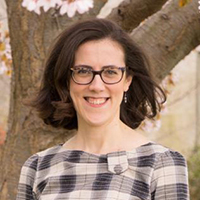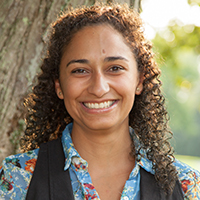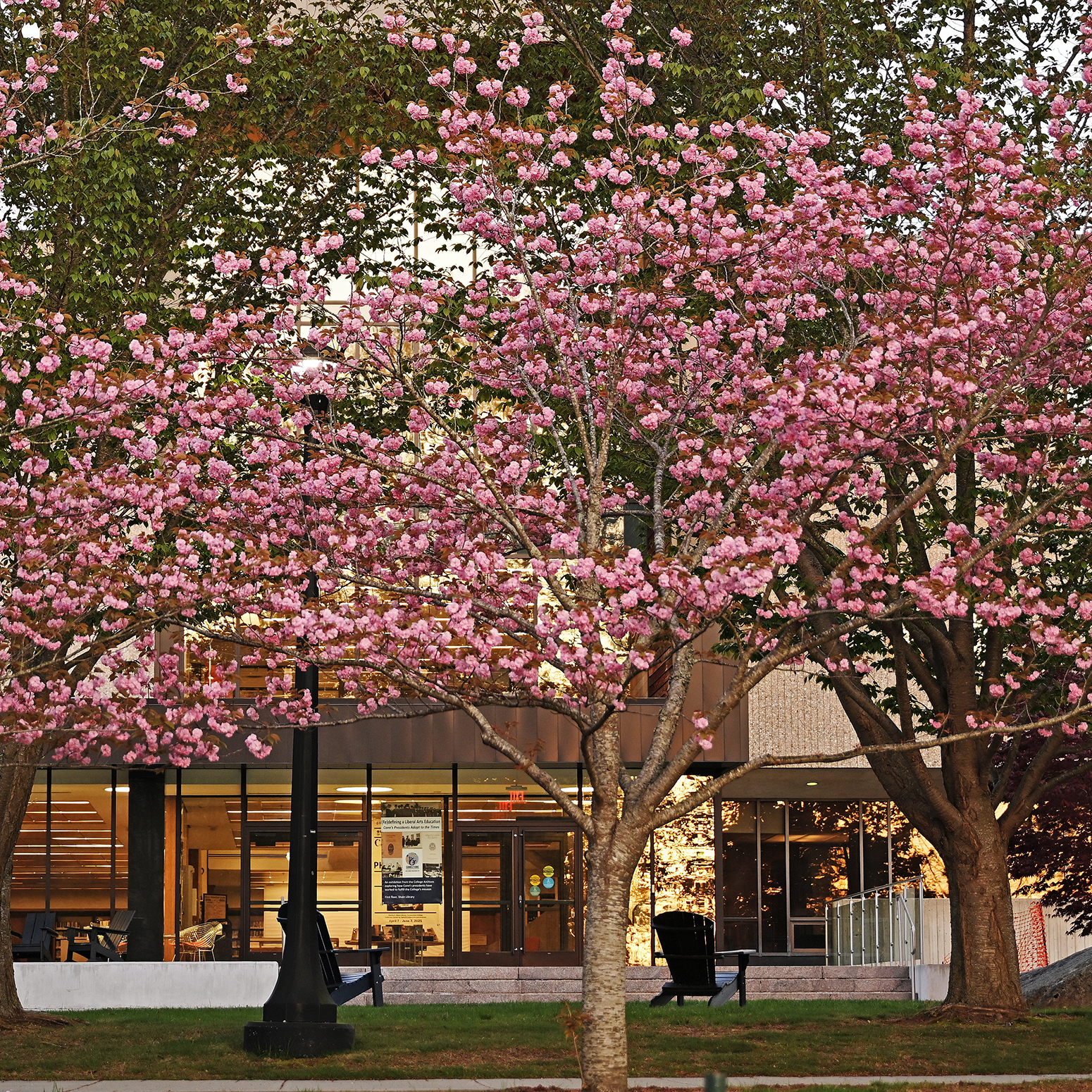
Biology Professor Maria Rosa awarded nearly $5M to study, restore Mamacoke Island habitat
Assistant Professor of Biology Maria Rosa has been awarded two grants totaling $4.8 million in support of her Mamacoke Island Aquatic Habitat Restoration Project. Mamacoke Island is a designated natural area within the Connecticut College Arboretum. The funding will support assessments and data gathering by Rosa and her students, as well as the project’s design, permitting, construction and ongoing maintenance/monitoring and conservation.
The Audubon CT In Lieu Fee (ILF) Grant Program has awarded an initial installment of $590,249 out of $3.3 million earmarked for the project. Future installments will be disbursed as the project reaches various milestones. The ILF grant includes a $100,000 long-term management endowment to be managed by the Arboretum that will be established and funded at the beginning of the five-year regulatory monitoring and maintenance period. The second grant is for $1.5 million and will come from the National Fish and Wildlife Foundation with support from NOAA.
Rosa has been using the Mamacoke Island marsh as a reference site since joining Conn’s faculty in 2018 and has observed and quantified erosion and biodiversity loss. “Right now, we’re focused on determining the status of the marsh and then making a plan to preserve what’s left of it,” she said. “A lot of great data has been collected by previous professors, but there are still a lot of gaps.”
She and her students have begun 18 months of data collection using sediment traps and plan to redo some vegetation studies in the spring. Students in Rosa’s lab and courses learn the role of biological diversity in the functioning of ecosystems throughout the world, with a focus on threats to ecological stability. As they collect data on the marsh’s sedimentation levels, vegetation and animal populations, Rosa and her students will work with former Conn biology professors as well as College Archaeologist Anthony Graesch and Arboretum Director Maggie Redfern. They will also use the Geographic Information Systems Laboratory.
Climate change has directly impacted the marsh, something Rosa and her students have documented locally. “The last couple of years, flood tides have exceeded averages and predictions,” she said. “Biology professors had been taking students to the marsh for 30 or 40 years, but we were unable to get out there the last few years because it was so flooded. But before we can design a large-scale conservation effort, we need to make sure it’s not just an aberration. Maybe it’s just flooding; we had a lot of rainfall last year—or maybe we’re seeing an actual decline.”
Rosa is determined to discover exactly what’s behind the erosion. It could be the loss of plants or animals, she said, or even the repeated pounding against the shoreline of waves made larger and stronger by floods and sea level rise due to climate change. She first became concerned in 2021 when she observed the flooding and documented a complete loss of marsh mussels due to what biologists call recruitment failure. Other experts she contacted suggested it was simply the end of the Metonic cycle, and therefore just an aberration. But in 2022 and 2023, the marsh flooded again. “At what point does a blip become the new normal?” she mused.
Rosa said vegetation in a marsh tends to be extremely stable due to consistent salinity levels. “A highly functional, biodiverse marsh is very different from a forest, where you see 20 gazillion species. A marsh has, say, five plants, and you know exactly what they are—so any change in vegetation raises an immediate alarm.” Along with the loss of plants and creatures Rosa has observed first-hand, scientists are also predicting the extinction of some marsh birds in Connecticut over the next decade due to flooding, she said.
The grants, Rosa hopes, will allow her and her students to carefully rebuild. “With conservation, we have an imperative to keep the site as close to natural as possible and natively source everything. We would build up the marsh sill, bring in the sediment and create an environment for the marsh to grow back. Once the habitat is restored, there is the possibility of a natural recruitment of mussels. They need that intertidal marsh to grow, and that’s all gone. The habitat must be restored before the biodiversity can return,” she said.
“The funds will allow us to collect a lot of useful information and then obtain permits based on what we determine needs to be done. This is a unique opportunity to analyze and protect the Mamacoke Island habitat, because everybody loves it. We have so many stakeholders.”

